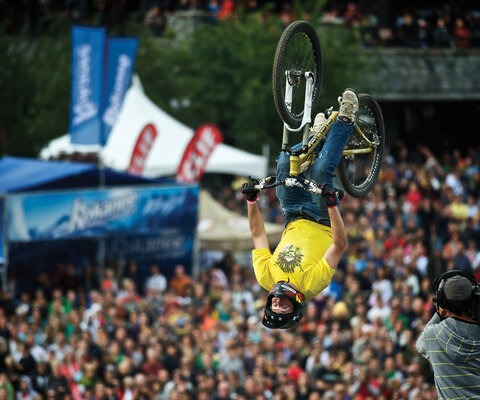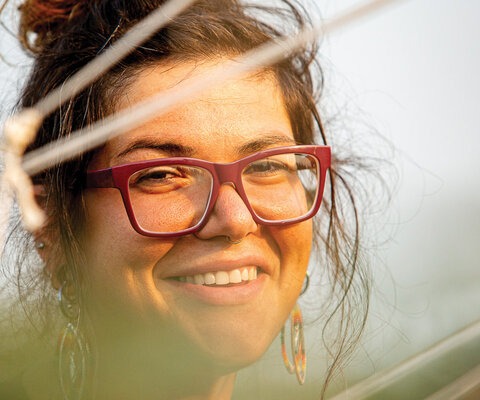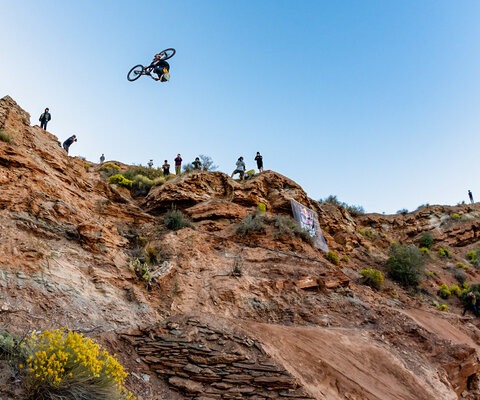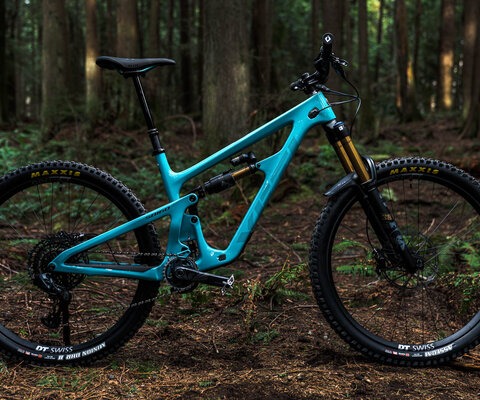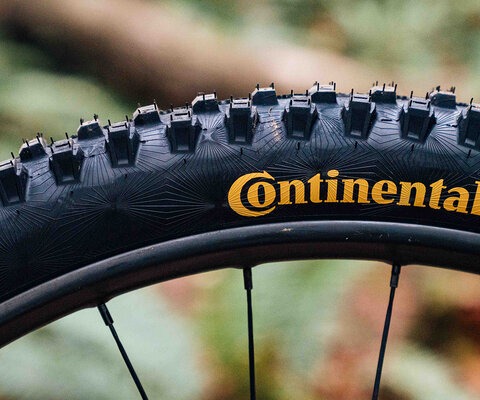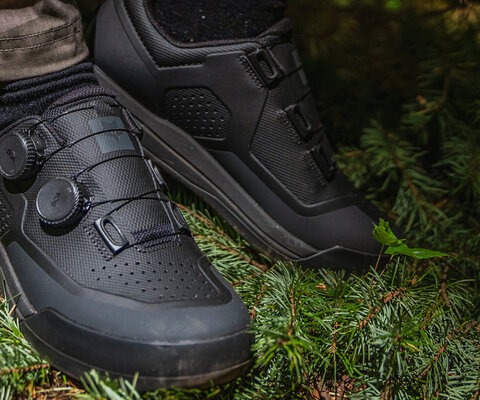
Truth & Tradition Cultural Contrasts in India's Himalaya
Words by Micayla Gatto | Photos by Paris Gore
I’m standing outside a hut at the base of the Himalaya, in a tiny village only accessible by foot, being sprayed with cow urine.
This is not how I imagined a mountain bike trip to India would go. Yet here I am, watching as the urine catches the first rays of the dewy morning light, sprinkling down like a holy golden sacrament. Which, in some ways, it is.
Back in Vancouver, BC, I would never have dreamed up such an incident, much less subject myself to it willingly. But moments like this are exactly why I’m here. Four months ago, Brandon Watts, Paris Gore, Scott Secco and I decided we wanted our next trip to take us out of our comfort zone. A place where every experience—from taxi rides to cow pee—would be different from those we’d known at home. That’s how we chose India.
Mountain bikes may have been the impetus for the trip, but the actual biking was an afterthought in our decision. Yes, we wanted to ride, but were well aware we’d likely find no perfect berms, no loam and definitely no skinny wooden ladders. We would, however, likely find plenty of culture shock, contrasts in livelihood and diverse outlooks on life. Such lofty ambitions are grandiose in theory; in reality, it turns out, they can be humbling. As the cloud of urine settled on me, I realized we’d succeeded in spectacular fashion.
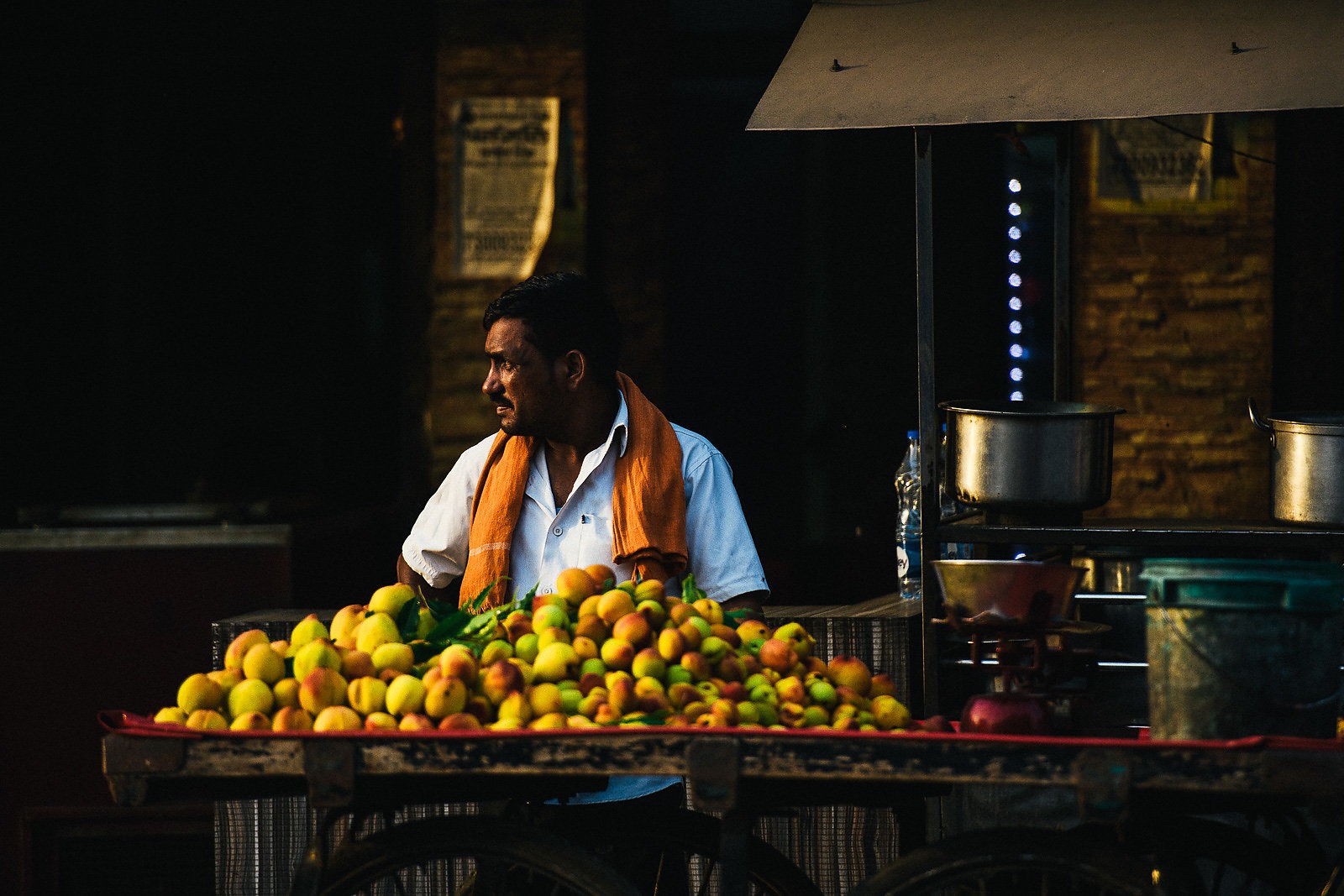


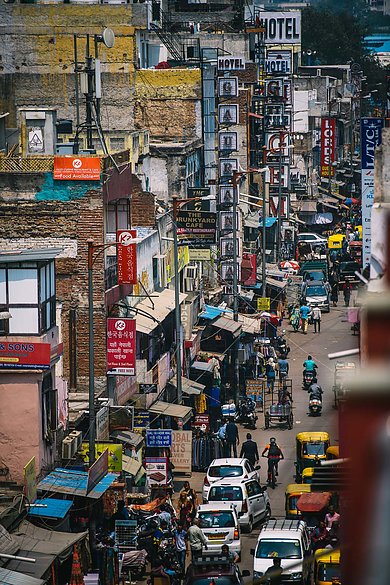
We touched down in Delhi during an early afternoon in May and were greeted by Mike McLean, a fast-talking Englishman who runs the tour company Mountain Bike Kerala. When we’d connected with Mike a few months earlier, he’d assured us there were trails. From Delhi we’d head into the mountains, exploring the foothills of the Himalaya and eventually making it to the Pindari Glacier, where generations-old trails web the high alpine.
But the dense heat and chaotic sounds of Delhi were too overwhelming to even imagine the awaiting mountains. As a veteran tour guide, Mike had expected this; after Brandon, Paris, Scott and I packed two vans to the brim, he immediately handed us huge beers as our driver somehow merged into the impossible network of traffic.
Dutch pop music bumped through the speakers as we dodged people, dogs, cows, scooters, trash fires and vehicles. Our hotel was in a poorer part of town, where livestock and people alike wandered and slept in the streets. I closed my eyes as hot air flooded through the open windows, taking everything in—the smells, the sounds, the absurdity of it all. Being a white female in a group with a massive amount of luggage, I felt curious eyes on me as we unloaded. I was definitely out of my element, and people noticed.
Stepping out of our hotel the next morning, the intensity and never-ending commotion of the city hit us like a storm. Street vendors, dogs, people, monkeys and vehicles danced around like a choreographed act. Smells wafted from sizzling pans and sounds echoed throughout the tight streets. Being in the city was like experiencing life at double speed, through a maze in a 100-degree furnace. But it was beautiful.
I’d been told stories of India being an “unsafe” place for women, but decided to give it the benefit of the doubt. My heart raced, further fraying my nerves as I tried to navigate my bike through the mayhem. To my surprise, aside from some curious spectators and a few enthusiastic kids, I was mostly ignored.
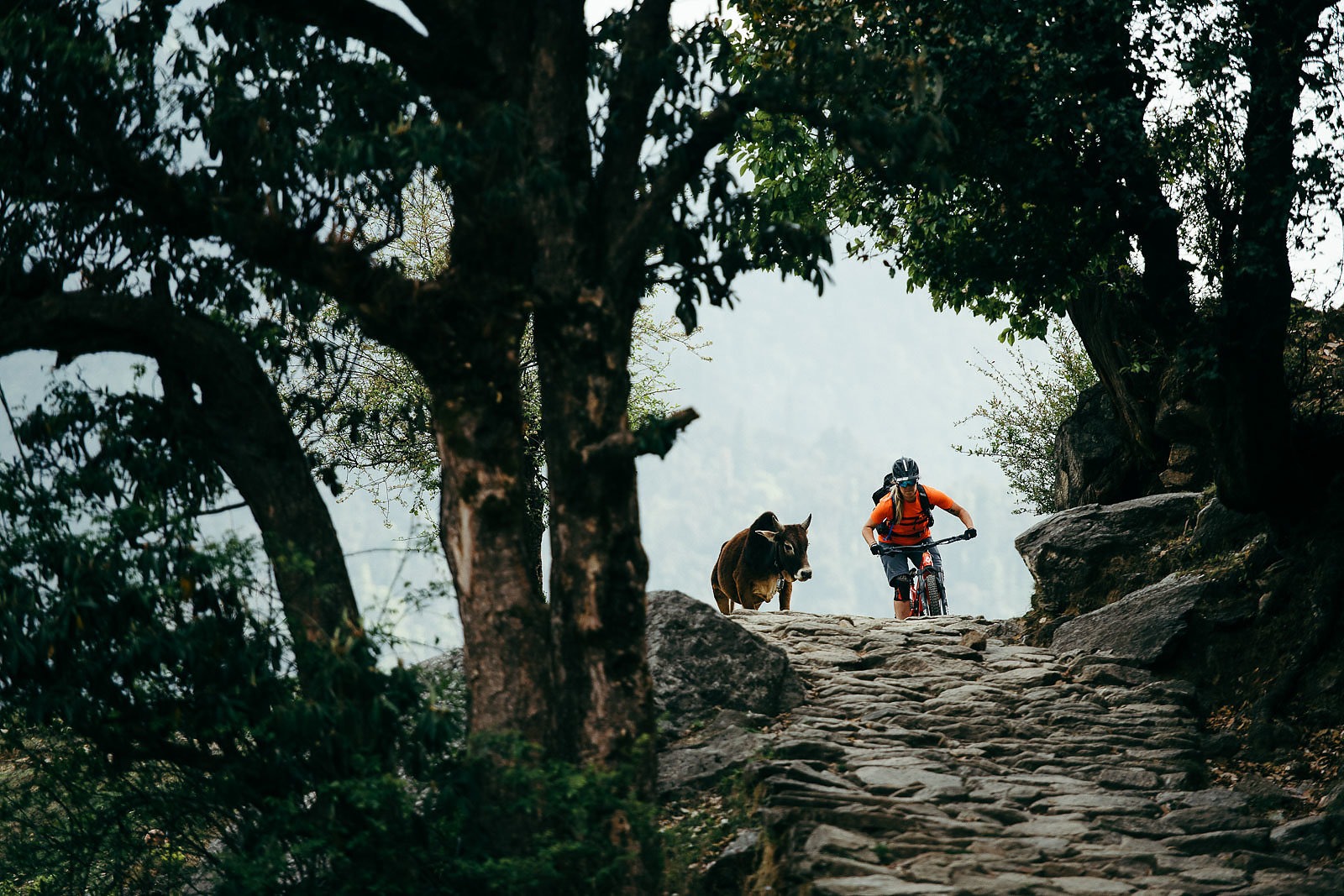
We soon left the city behind, winding our way ever farther from the urban epicenter. Burnt grass fields turned into forested hillsides; wide, unfinished roads merged into winding mountain lanes; and anticipation began to replace the mental shock from Delhi’s chaos. We climbed ever higher until we reached Napital, a lakeside mountain town where cliffs rise directly from the water and the buildings perch precariously on the steep, lush slopes along the banks. This was the starting point for our journey to the Pindari Glacier.
We spent the next three days burrowing into the Himalaya, stopping to ride along the way. With each day I became increasingly appreciative of our intricate trail networks back home—at such a ponderous elevation, the landscape is mostly high desert spotted with stands of pine trees, and the slippery needles made for tricky off-camber traversing. After miles of old fire roads, strange disjointed hiking trails and goat paths, we were itching to get into the mountains—the big ones—and start our ascent to the glacier.
One of the many cultural contrasts I noticed was the definition of recreation. Leisure seemed limited to kids playing soccer or a rogue skateboard; bikes seemed to be strictly utilitarian, used for transporting goods or commuting to work.
As we drove, our guide, Pankaj, told us about Hindu culture and the norms in rural northern India. One of the many cultural contrasts I noticed was the definition of recreation. Leisure seemed limited to kids playing soccer or a rogue skateboard; bikes seemed to be strictly utilitarian, used for transporting goods or commuting to work.
The most shocking contrast, however, came from my own “unfortunate” situation.
Our path into the mountains took us by a famous temple, in front of which Pankaj pulled the van, parked, and invited us to join him inside. Before I could enter, Pankaj held me back from the boys. “OK,” he said, “I must ask you before entering: Are you pregnant or do you have your monthly cycle at all right now?”
I went bright red. I’m an open person, but having a male guide ask something so personal, surrounded by an all-male crew, was uncomfortable. To respect Hindu tradition, I told the truth. “Yes,” I answered. “I’m on my monthly cycle.”
He looked shocked to the point of panic. “Oh, noooo, no, no, no,” was his response. “Are you serious?! Oh nooo!”

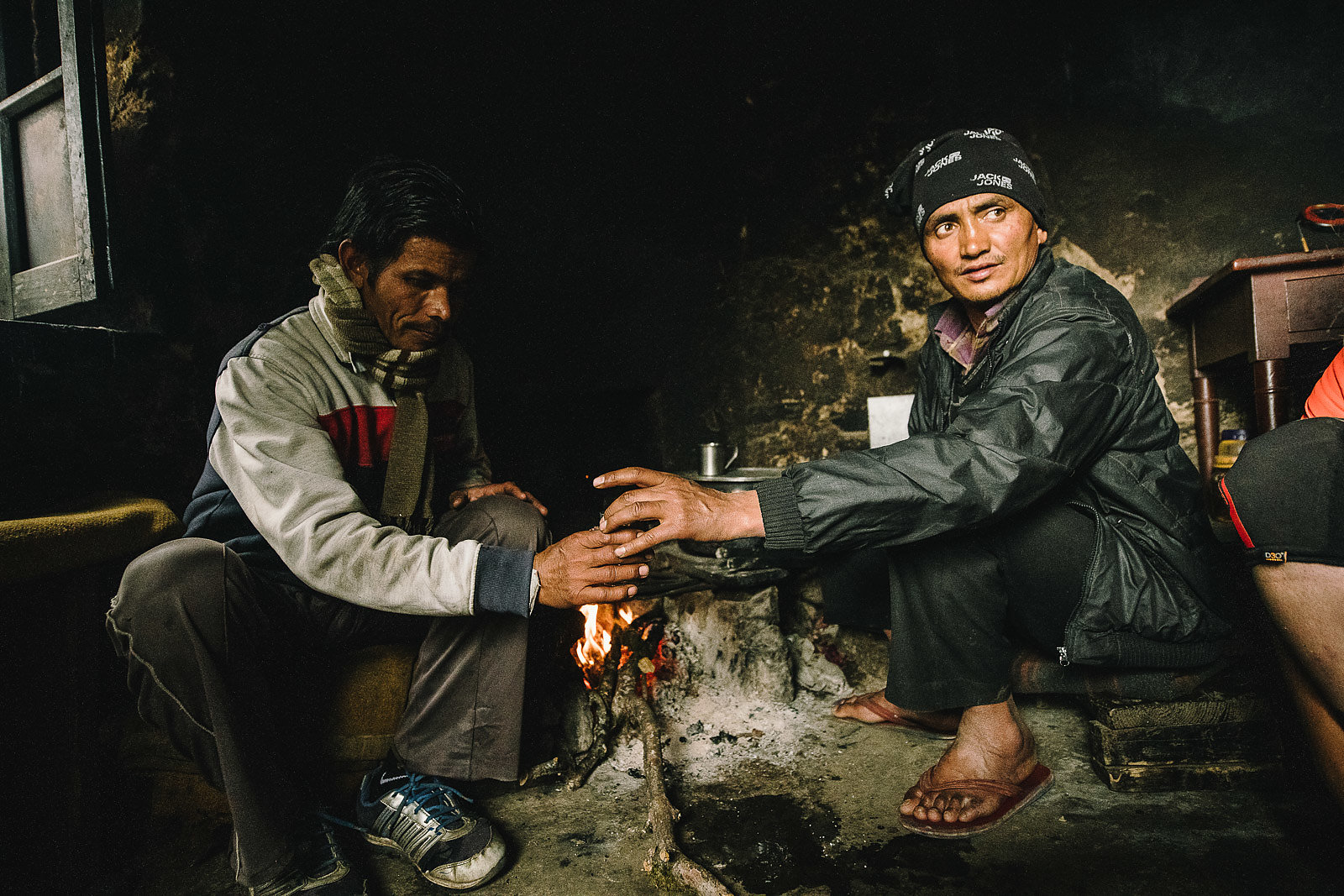
Pankaj then informed me women on their periods are not allowed in temples or holy areas; in many rural areas, menstruating women would sleepin a separate room or in the pasture with the cows, their meals brought out by family members. It wasn’t just the temple, he explained. The Himalaya in general is a holy place, and I would not be able to enter while on my period.
Frustrated and disappointed at the thought of postponing our trip because I’m a woman, I felt as though this natural process—one that happens to every female on Earth—was a blasphemous act. The whole concept was hard to comprehend, but we were here to experience cultural differences. This, I concluded, was about as different as it gets.
My frustration eventually spawned curiosity, and I asked how this affects work in these towns, as women are largely the ones doing the gathering and farming. Pankaj didn’t have much of an explanation. He did mention that in urban areas this ritual has been mostly eradicated.
By the time we reached the small mountain town of Khati I was on the last day of my cycle. I could hardly wait to live like a normal human again. First, however, came the cow pee.
Before we could set off into the Himalaya, tradition demanded a purification process, part of which is spraying cow urine all over me and anyone else who’d been in contact with me during my “time.” That “contact” included sleeping in the same room or even eating meals together. The boys were not thrilled at this news, but were compliant as my bags, my belongings and my friends were all “purified.” Then Pankaj lifted the cup of urine, tipped his head back, and drank the rest.

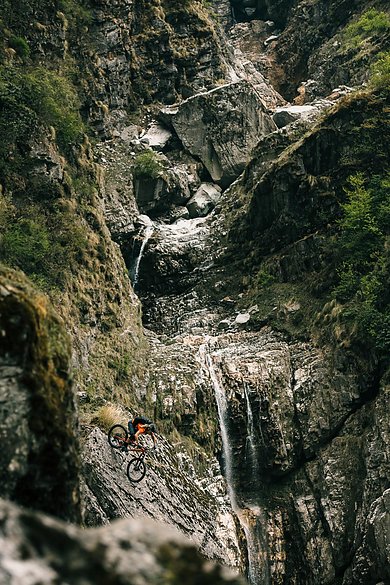
We spent the next few days hiking and riding up to the base of the Pindari Glacier, through the most breathtaking and frustrating terrain I have ever experienced. Hand-built cobblestone roads wound along steep mountainsides and through massive riverbeds, the eroding cliffs above glowering with the constant threat of flash flooding. After picking our way through one final riverbed, we arrived at Dwali, the last overnight destination before glacier camp. Tired, excited and eager for a meal, we downed dinner before we all passed out on one big platform with dreams of what the next morning would bring.
Eight days after our arrival in India, we made our final push to the Pindari Glacier, following the river up the valley to where we would camp. Whoville- esque tufts of golden grass dotted the banks as we traversed below the towering mountains. The winding singletrack mixed with sections of cobblestone. Small rivers carved deep gouges through our path, pulling soil and earth away from the hillside. Burdened with mules and gear, our progress slowed to a creep.
At camp we met Baba Gi, a holy man who lives at the base of the Pindari Glacier in a small stone house. While crouching together in the cook hut to get away from the stormy weather outside, a soaking- wet puppy wandered out of the darkness and rain to huddle in the doorway. We’d seen her at our camp in Dwali, meaning she’d followed us the entire way. The locals gave me disapproving looks when I brought her into the hut and began drying her off, but I didn’t care. I couldn’t leave her shivering outside.
That night temperatures dropped below freezing, and three of us crammed into one tent (mine with the luxury of a wet dog), two in another, while the rest spread out between the cook and storage huts. In the middle of the night I crawled out of the tent to pee; instead, I was stopped by the most beautiful night sky I’d ever seen. Stars spilled across the blackness like a mix of diamonds and milk, lighting up the towering white peaks surrounding our camp. Despite the cold, I stood frozen in wonder. I felt as if I was at the bottom of a basket, a small and insignificant speck being carried through the galaxy. A strange calm settled over me, and at that moment I knew everything was going to be OK.
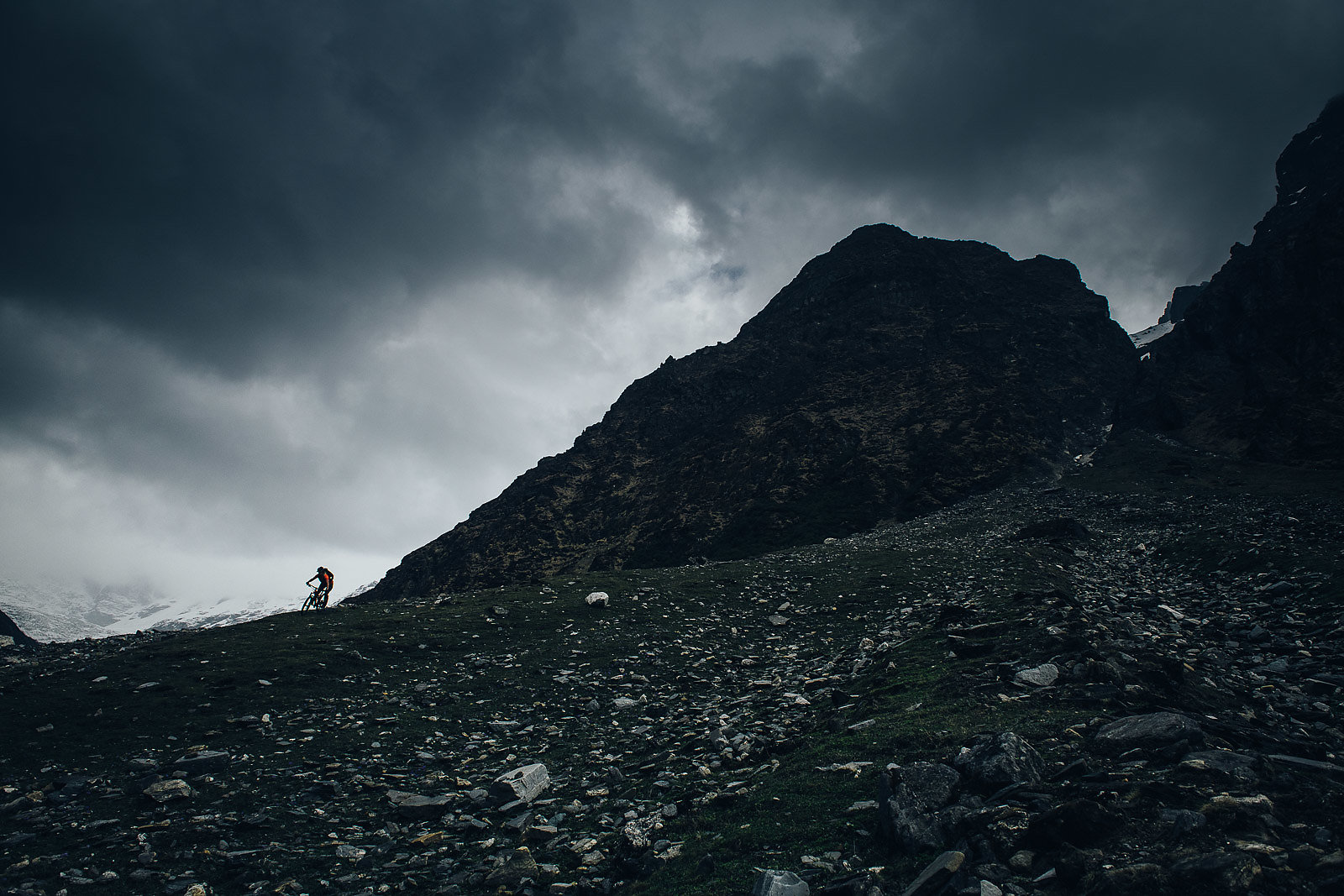
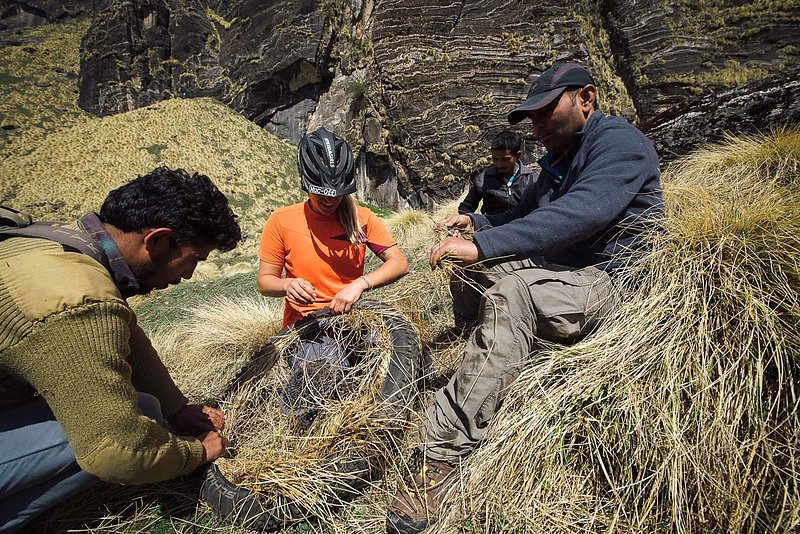
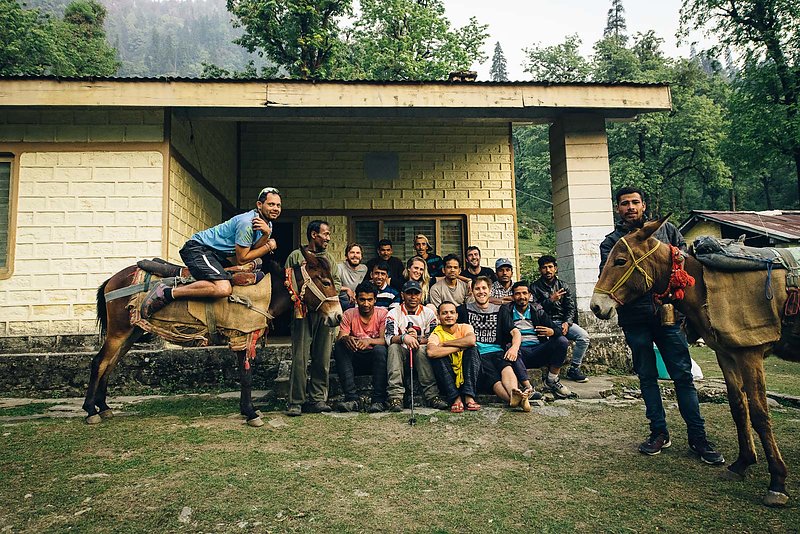
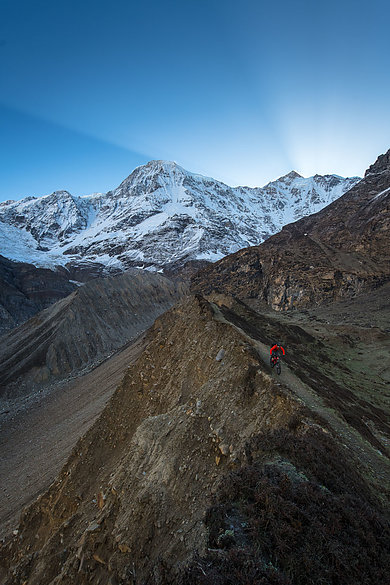
The next morning, we awoke to a layer of ice coating the tents and bikes, a drastic shift from the 100-degree heat we’d experienced in Delhi the week before. The day’s mission was to top out on the ridgeline above camp before sunrise, catching the early morning light before it grew too harsh. Only a short while later I stood at the top of the ridgeline, looking down at our tiny base camp and breathing wisps of condensation, arms crossed as we waited for the light to burst over the horizon and flood the valley.
The rays broke over the tallest peak and we were flooded with warmth, putting the vastness of the glacier and landscape into near-bewildering perspective. I felt smaller than I ever thought possible, even after the previous night’s pee break. We soaked up every moment, but still had a long way to go before the day’s journey was done. We started pedaling.
Our remaining days were marked by momentary glory, persistent struggle, and the awkward oddball occurance, like when I flatted and was forced to fill my tire with grass because we had all forgotten to pack an extra tube that morning. It rode exactly how you would expect it to: poorly.
All too soon it was time to make our way back to the city, where the buzz and bustle and chaos awaited. It was difficult leaving the glacier and vast alpine valley. We’d been in India for 15 days, but it felt as if we were just figuring things out there, was still so many unknowns to explore, so many experiences to have.
That said, there was one upside: At least on the way out, I wouldn’t have to shower in cow pee.
